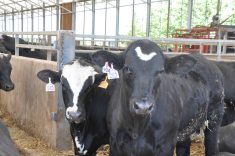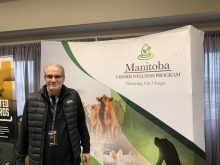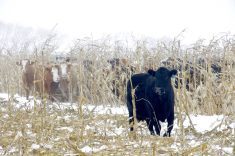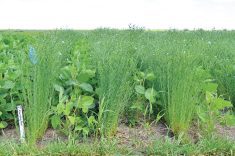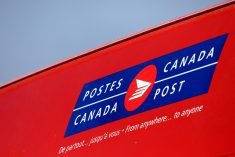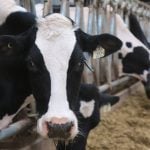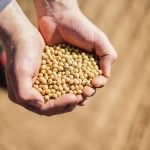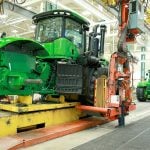Two people who are institutions at the Manitoba Forage and Grassland Association have now been added to the organization’s wall of fame.
Long-time board member and past chair Larry Wegner, and John McGregor, probably best known for his years managing the Green Gold alfalfa quality monitoring program, are this year’s inductees for the honour.
Why it matters: It is the third year the Manitoba Forage and Grassland Association has singled out individuals for their contributions to the organization and its goals.
Read Also
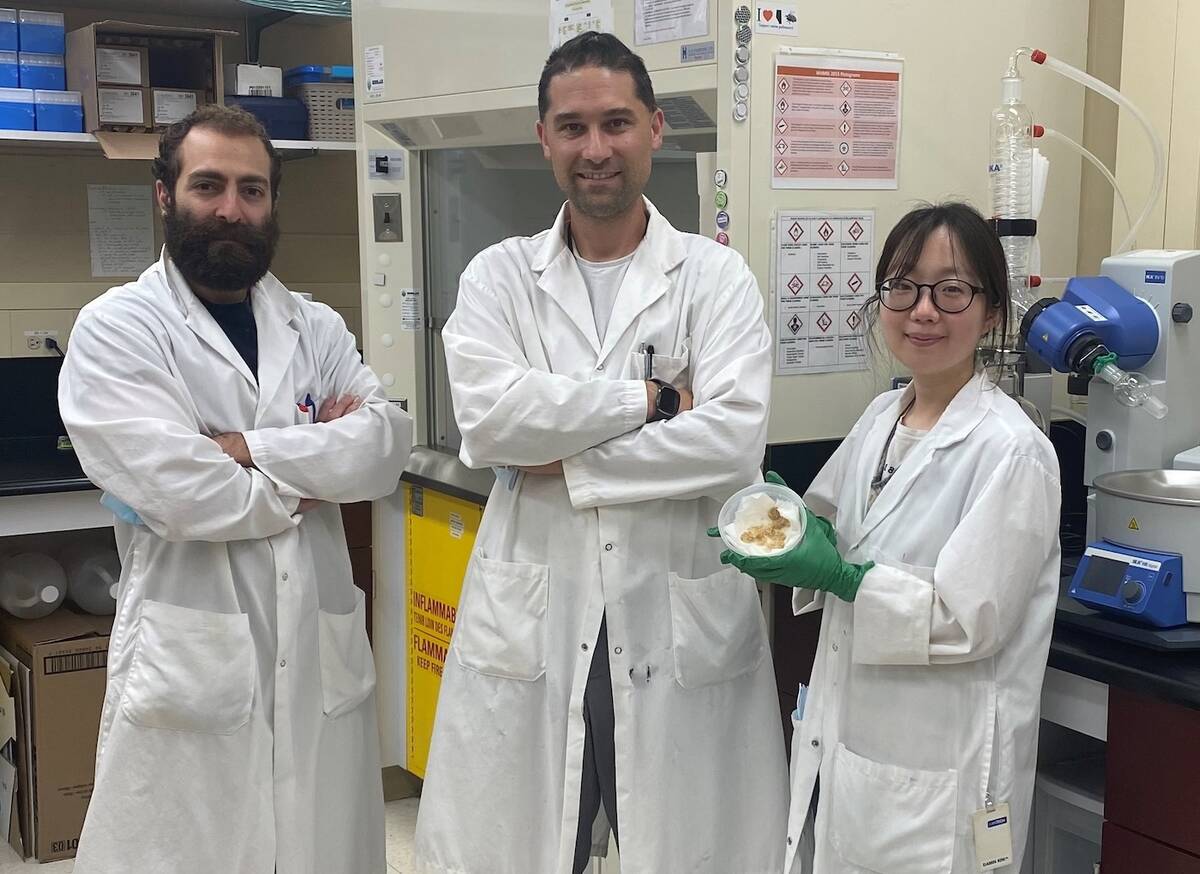
Nanotechnology used to develop genetic pest control
Researchers from Agriculture and Agri-Food Canada are working with nanotechnology and RNA to develop new pest insect control methods as an alternative to chemical spray on crops.
“I have had the privilege of working with both of these gentlemen who have contributed so much to our MFGA organization,” said current chair Lawrence Knockaert. “Larry gave us leadership at the board table as our chair and outwardly to our audiences via his network, blogs and expertise. ”
As for McGregor, “John deserves a ton of credit for his leadership, advocacy and delivery of the MFGA Green Gold program,” Knockaert said.
The honourees were announced during the MFGA’s annual Regenerative Ag Conference, an event that Wegner helped get off the ground back in 2018.
Larry Wegner
Wegner, who runs a family-operated cow-calf and yearling operation near Virden, got involved with the MFGA when it used to run meetings in conjunction with Manitoba Beef Producers.
“At the time, they were having a hard time getting people involved,” Wegner said. “I am a strong believer that we need a strong forage industry to have the beef industry functioning well.”
Since then, he has logged two years as vice-chair of the organization, two years as chair and two years as past chair.
The MFGA today looks much different than the one that Wegner joined.
“We basically started with a clean slate. We could do whatever we wanted,” he said.
A conference with accomplished speakers mixed with local producers was one of Wegner’s ideas. Today, that conference draws hundreds of attendees and speakers from across Canada and the U.S.
“My role was bringing in some big ideas, but I had the people working with me to make it happen.”
Over the course of several years, the organization officially adopted the regenerative agriculture cause, becoming one of the main voices for the movement in Manitoba and a partner for organizations like the Manitoba Association of Watersheds, Manitoba Organic Alliance, Ducks Unlimited Canada, Manitoba Beef and Forage Initiatives, and various other private and non-profit stakeholders.
Riding a wave of funding opportunities around sustainable and regenerative farming, the MFGA has obtained funds through the Manitoba Conservation Trust and Agriculture and Agri-Food Canada. It has led research projects and its Aquanty hydrological modelling project has been tapped by organizations like the Assiniboine River Basin Initiative and local governments to map out water management.
In 2021, the MFGA announced an expanded Aquanty forecasting tool allowing farmers anticipate water flows in their area.
Following the MFGA’s reduced annual meeting in 2020, when the event was forced online due to the pandemic, Wegner also took the lead on a regular MFGA blog. He credited former chair Dave Koslowsky for setting the stage for much of the growth.
“I never thought the MFGA would be this far along,” he said.
John McGregor
McGregor spent years with Manitoba Agriculture sharing his forage production expertise with farmers. His history with the MFGA started a decade ago.
Under his 25-year watch, the MFGA’s Green Gold program (originally under the provincial government) expanded into a province-wide asset for producers looking to optimize their alfalfa cuts.
Every year, volunteers from various regions would submit alfalfa samples to be tested for feed quality, with those results were aggregated into weekly reports.
“Through the Green Gold program and the information that’s provided, [producers have] gone from maybe a two-cut system to a three or a four-cut system of alfalfa, which has greatly improved the quality of the alfalfa that they’re using,” McGregor said. “This quality is something that the dairy industry really wanted to look at.”
The Green Gold program was based on a similar initiative in Wisconsin. The U.S. program was highlighted by a visiting speaker and a number of Manitoba Agriculture personnel became interested.
McGregor was working in southeast Manitoba at the time, where the program gained traction among dairy producers. They were critical in providing the financial capital to keep the early program running, he said.
The programs’ expansion was steady, but “very gradual,” he recalled.
Normal workflow at the time had dairy producers taking their first cut late, similar to the current timing of beef hay, he said.
“They weren’t getting the quality. Once they started to see where the quality of their alfalfa was in early June … they started taking on that [earlier cut] practice. And once they did that, they saw how the cows performed, and then, next thing they knew, they were taking a second cut 28 days later and then a third cut 30 days later and then they were taking a fourth cut after freeze up.”
McGregor has stepped away from the program. Today, his name appears behind the MFGA’s regular market updates and status reports as a relative newcomer to the association’s services.
That program provides producers with guidance on general price trends when buying and selling hay in the province.




